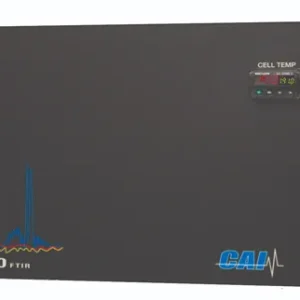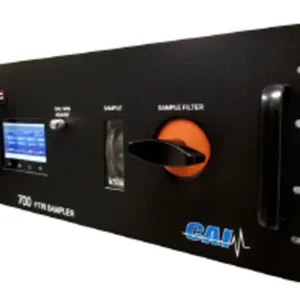CAI offers four analyzer models that utilize Fourier Transfer Infrared technology for measuring concentrations of multiple gases within a sample. CAI FTIR analyzers deliver fast, accurate analysis of virtually any gas that has an infrared absorption spectrum.
- 700 FTIR – Most IR-absorbing gases + short cell for higher concentration levels
CAI FTIR analyzers are based on Fourier Transform Infrared Spectroscopy. Non-symmetrical gas phase molecules absorb IR light, causing the molecular bonds to stretch, bend or rotate. This absorption is used to measure and quantify several chemical components simultaneously.
- Brand
- Overview
- Features
- Applications
- Product Data Sheet
Brand
California Analytical Instruments

Overview
The 700 Series FTIR is based on Fourier Transform Infra-red Spectroscopy. Nonsymmetrical gas phase molecules absorb IR light which in turn causes the molecular bonds to stretch, bend, or rotate. This absorption is used to measure and quantify several chemical components simultaneously. An IR source emits radiation in the range of 7500 to 375 cm-1 . The IR radiation is split in a Michelson Interferometer where half of the light passes through to a fixed mirror and the other half is reflected towards a moving mirror. The two beams recombine and pass through a gas cell where the sample absorbs light at molecule specific frequencies. The remaining light is measured with a DTGS detector and Fourier transformed to convert from time domain to frequency domain producing a single beam spectrum which is ratioed with a baseline spectrum and produces an absorbance
spectrum. This absorbance spectrum is quantified with chemometrics to produce a concentration value.
Features
• Proven, rugged interferometer with gold Mirrors
• No liquid nitrogen required
• 0.8 Wave number (cm –1) resolution
• Heated sample cell ( 50° or 191° C)
• Internal, rack mount, desktop PC or laptop
controlled with fully automated Opus
spectroscopy software
• High Sensitivity with 10.2 meter optical path
• Low cost of acquisition and operation
Applications
• Process control
• Combustion efficiency
• Stack gases (CEM/MACT)
• VOC abatement/scrubber efficiency
• Agricultural emissions
• Pharmaceutical
• Semiconductor
• Vehicle emissions
• CO2 purity
• Ammonia slip
• Gas purity
• Greenhouse gases
• Biomass/landfill gas







